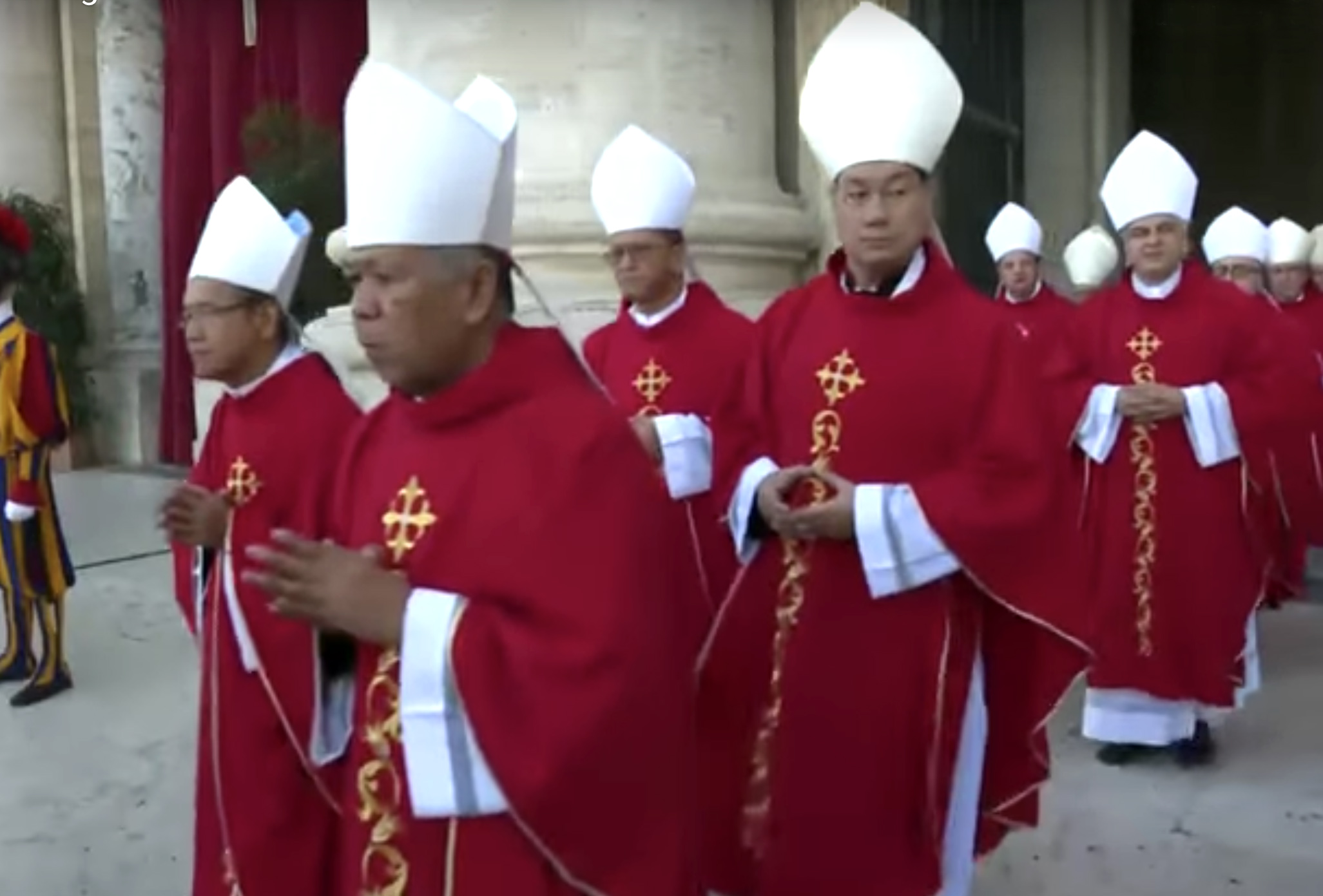The “Ad Limina” visit by Philippine bishops to the Vatican drew to a close over the weekend, CBCP News reported.
On Friday, Pope Francis met with the bishops from Mindanao and the Metropolitan Province of Lipa. The pontiff greeted the bishops individually and received gifts and letters from each one of them.
The bishops concluded their “Ad Limina” with a Mass presided over by Archbishop Romulo de la Cruz of Zamboanga at the Papal Basilica of Mary Major.
Some of them also concelebrated in the evening Mass presided over by the pope on the vigil of Pentecost at the St. Peter’s Square over the weekend.
They were the last of the three groups of bishops who made traditional their visit to Rome.
For three weeks, from May 20 to June 8, three sets of bishops were in Rome for the obligatory visit to the pope and give him a report on the status of their dioceses covered by a five-year period.
In the “Pastor Bonus,” the 1988 Apostolic Constitution promulgated by St. John Paul II, it was explained that “Ad Limina” visits have a sacred meaning as expressed in the bishops’ “visit to the tombs of Peter and Paul.”
The visit has also a personal meaning because “each individual bishop meets the successor of Peter and talks to him face to face.”
In addition, the “Ad Limina” has a curial significance which is a “hallmark of community, because the bishops enter into conversation with the moderators of the dicasteries, councils, and offices of the Roman Curia”.
Almost present in all bishops’ events, Fr. Rumán García, a student in Both Laws at Rome’s Lateran University, remarked of the visit, “Once every five years, bishops must make a pilgrimage to the tomb of their predecessors, the apostles, in Rome, and report to the Holy Father and be grilled by the Roman dicasteries.”
The first set of bishops was composed of prelates from Northern and Central Luzon, followed by the bishops from the Visayas and the Metropolitan Province of Nueva Cáceres. The last was for bishops from Mindanao and the Metropolitan Province of Lipa.
Among the activities of the bishops was a visit to the tomb of the first Filipino bishop, Jorge Barlín.
Barlín died in Rome in 1909 as he was having his “Ad Limina” Visit. His remains were buried in a chapel owned by Dominicans at Rome’s Campo Verano Cemetery.
There had been attempts to bring the bones back to the Philippines but could not be accomplished because his bones were transferred some years ago to a common grave, and it posed difficulty in identifying which among the bones are the bishop’s.
Bishop Pablo Davíd of Kaloocan remarked of Barlín, “He became bishop at that time when most of the other bishops of the Philippines were either Spaniards or Americans.”
“He refused to join the Filipino secular clerics who, in the aftermath of the revolution against Spain, had decided to cut off from Rome and form an Independent Philippine Church,” David added.
According to Fr. Marvin Mejía, CBCP Secretary-General, the return of the bones of the Bishop Barlin is among the ideas being considered in the celebration of the 500th year of Christianity in the Philippines.

Filipino bishops walk in procession as they attend the evening Mass presided over by Pope Francis on the vigil of Pentecost at the St. Peter’s Square on Saturday. SCREENSHOT/VATICAN NEWS
Philippine Bishops Conclude 'Ad Limina' Visit in Rome
Last of Three Groups from Philippines


